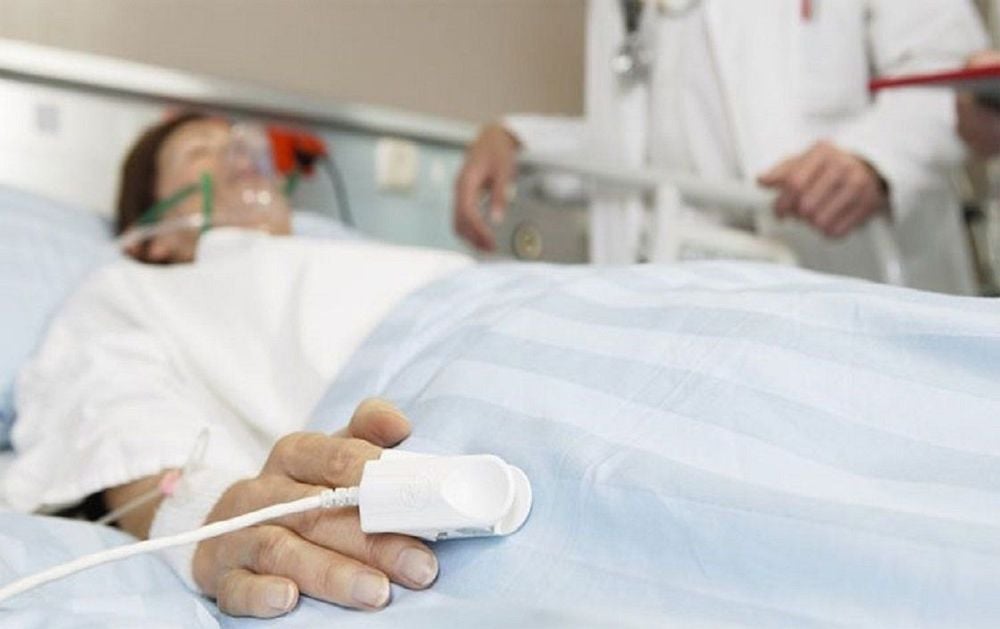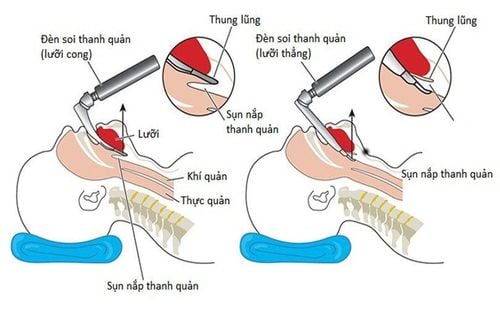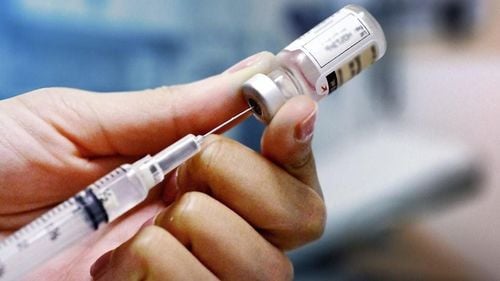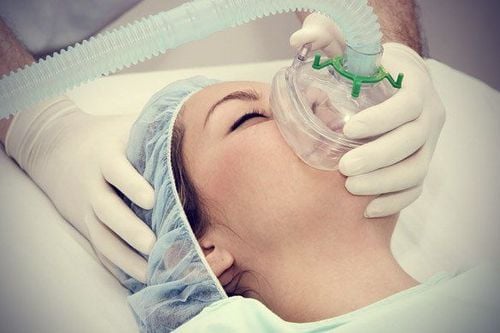This is an automatically translated article.
The article was professionally consulted by Specialist Doctor II Dinh Van Loc - Department of General Surgery - Vinmec Danang International General Hospital.
Appendicitis is an infection of the peritoneum caused by a ruptured appendix. This disease is very dangerous, easy to spread into an abdominal infection and if not promptly treated, the patient can die.
1. Symptoms of appendicitis
Appendicitis is an infection of the peritoneum. Patients will have the following clear signs:Abdominal pain: The abdominal pain lasts continuously, dull, not divided into episodes like acute appendicitis. More severe pain. When exercising or coughing, the pain will be greater than usual.
Dry vomiting
Abdominal spasticity: Appendiceal peritonitis causes contraction of the abdominal wall. Gently pressing your finger on the abdomen will feel pain.
High fever : Painful peritoneal infection, body temperature can rise and is accompanied by common fever symptoms such as dry lips due to lack of water, bad breath, rapid pulse, difficulty breathing,...
Hiccups : Peritonitis irritates the muscles causing the patient to cause constant hiccups. However, this symptom only occurs initially and quickly subsides after 1-2 hours.

Viêm phúc mạc ruột thừa khiến bệnh nhân sốt cao
2. How dangerous is appendicitis peritonitis?
Appendicitis peritonitis is very dangerous, can lead to death if the patient is not treated promptly.If detected early, the inflammation in the peritoneum is only in a small part, the scope of infection is small. If the disease is prolonged, it can cause the entire peritoneum and abdomen to become infected, cause fluid retention and collection of pus.
3. Endotracheal anesthesia procedure for appendicitis peritonitis surgery
Patients will have to fast before 6-8 hours. Basic tests, chest x-ray, electrocardiogram, anesthetic examination to assess the general health of the patient. Using endotracheal anesthesia for appendicitis peritonitis surgery. Place the patient in the supine position, with the head low, on the left side. Abdominal examination assesses the general peritoneum and visceral organs. Dissection revealed the appendix and the mesentery to the base. Cut the appendix from the cecum, close the base of the suture, use a pair of clips or a suture device (Stapler) to cut and stop the bleeding of the mesentery with an endoscopic electric knife. Inject sodium chloride saline solution to wash the peritoneal cavity. Suction and clean the area of peritonitis. Take out the specimen. Close the trocar position on the abdominal wall. Anesthesia for troca sites After surgery for appendicitis peritonitis, the patient is taken to the recovery room, where the patient is monitored until the anesthetic wears off.
Sau phẫu thuật bệnh nhân được theo dõi cho đến khi tỉnh lại
4. Caring for patients after appendicitis peritonitis surgery
Use strong antibiotics according to the antibiotic map or according to experience. Adequate supplement with electrolytes after surgery Monitor infection status, fever, white blood cell count, CRP... Pain relief and fever reduction Prophylaxis of nausea and vomiting Eating and drinking enough substances to enhance resistance, restore health early and shorten treatment time. Rest, live, exercise gently and in moderation. Eat liquid, soft, easy-to-digest foods to reduce pressure on the digestive system. Drink a lot of water. If the pain persists, you can consult a doctor to prescribe more pain relievers to take. Thoughts are comfortable, avoid stress so that the appendix avoids swelling and inflammation. Follow up with regular check-ups as advised by your doctor. Appendicitis is extremely dangerous. Therefore, if you have symptoms of continuous abdominal pain, dry vomiting, high fever, you need to go to a reputable medical facility for examination and appropriate treatment.Vinmec International General Hospital is one of the hospitals that strictly applies safe surgical anesthesia practice standards according to international guidelines. Vinmec has a team of experienced anesthesiologists and nurses, modern equipment such as: nerve detectors, ultrasound machines, Karl Storz's difficult airway control system, comprehensive anesthesia monitoring system GE's AoA (Adequate of Anesthesia) including monitoring of anesthesia, pain and muscle relaxation will provide high quality and safety, helping patients to have adequate anesthesia, not wake up, and do not have residual muscle relaxants after surgery.
After surgery, our patients always receive good analgesia care, prevent vomiting for patients at risk of nausea and vomiting after surgery, and have a heating system during and after surgery so most of the patients are very satisfied. heart, early mobilization, earlier recovery and discharge ...
Doctor Dinh Van Loc graduated as a General Doctor in Hue in 1990, graduated as a Specialist Doctor I in 2003 and a Specialist Doctor in Anesthesia II. resuscitation in 2017. Dr. Loc has advanced training in Anesthesiology and resuscitation and has more than 23 years of experience in pediatric intensive care anesthesia, cranial nerve anesthesia, and resuscitation anesthesia for patients. Liver resection, esophagectomy at the Hospital.
Any questions that need to be answered by a specialist doctor as well as customers wishing to be examined and treated at Vinmec International General Hospital, you can contact Vinmec Health System nationwide or register online HERE.














